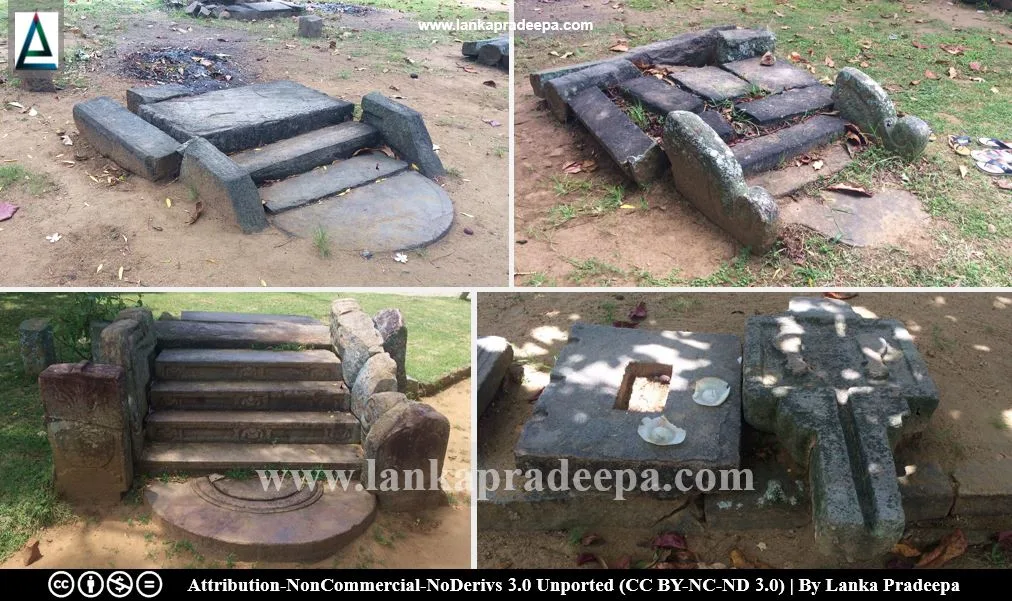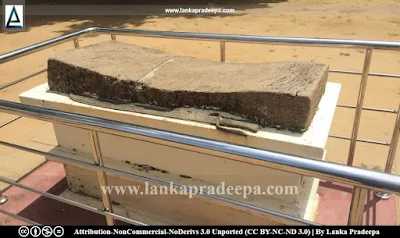
Vijithapura Raja Maha Viharaya (Sinhala: විජිතපුර විහාරය; Tamil: விஜித நகரம் விகாரை) is a Buddhist temple situated in Vijithapura village in Anuradhapura District, Sri Lanka.
History
Ancient Vijithapura
Vijithapura is mentioned in Sri Lankan chronicles as one of the earliest townships established in the country (Fernando, 1982). According to Mahavamsa, five townships named Upatissagama, Ujjeni, Uruwela, Anuradhagama, and Vijithapura were established in Sri Lanka after the arrival of Indian Prince Vijaya in the 6th century B.C. (Fernando, 1982; Geiger, 1986). It is said that these townships had been named after the chief generals of Prince Vijaya (Fernando, 1982).
Vijithapura is mentioned again in the chronicles nearly 300 years later as a fort where a major battle between the forces of Prince Dutugemunu (161-137 B.C.) and King Elara (205-161 B.C.) took place in the 2nd century B.C. (Fernando, 1982; Mandawala, 2012). After that, there is no more mention of Vijithapura in the ancient chronicles.
The exact location of this place or the ruins of the ancient fort has not been identified yet (Mandawala, 2012). However, a modern village with the same name exists in close proximity of Kala Wewa reservoir, which according to the view of some scholars such as Geiger, may be the location of ancient Vijithapura (Basnayake, 1986; Geiger, 1986). However, some scholars believe that the ancient Vijithapura may possibly be Polonnaruwa or an area in close proximity to it (Basnayake, 1986; Parker, 1909).
Vijithapura Viharaya
It has been long believed by locals that ancient Vijithapura is located near Kala Wewa where the present Vijithapura Viharaya exists. However, some scholars such as Parker do not agree with that local belief;
"Where was the town Wijita, to which these minister proceed from Upatissa, a city north of Anuradhapura, in order to meet the distinguished traveler from Gonagama? It has been long believed that it was at Kala-waewa, in the North-central Province, where a small Buddhist temple, called Wijitapura wihara, exists to the present day. I have examined this place, and failed to find signs of any early works of importance. The best evidence, the dimensions of the bricks, is uncertain. Those accessible in the dagaba at the wihara are all more or less in pieces, and are of two sizes, averaging 2.71 inches in thickness, which it is possible may be pre-Christian, and 2.10 inches. There are also some worn fragments of inscriptions of the fifth or sixth century A.D., cut on the step leading to the temple enclosure. Nothing but this monastery is locally known to have been constructed at this spot"Citation: Parker, 1909. pp.237-238.
Ruins
Presently, a large number of ruins of ancient building and structures has been unearthed from the temple premises. Among them, there is a smooth granite stone called "Kadu-Ge-Gala" that, according to locals, have been used by Dutugemunu's soldiers to sharpen their swords
before the Vijithapura battle.
A protected site
Vijithapura Viharaya located in Kala Wewa village in the Divisional Secretary’s
Division of Kala Wewa is archaeological protected monument, declared
by a government gazette notification published on 31 March 1950.


 .
.
References
1) Basnayake, H.T., 1986. Sri Lankan monastic architecture. Orient Book Distributors. p.1.
2) Geiger, W., 1986. The Mahāvaṃsa, or, The Great Chronicle of Ceylon. Asian Educational Services, New Delhi. pp.58-59,171-173.
3) Fernando, A.D.N., 1982. The ancient hydraulic civilization of Sri Lanka in relation to its natural resources. Sri Lanka Branch, the Royal Asiatic Society. New Series Volume XXVII Special Number. pp.28-29.
4) Mandawala, P.B., 2012. Sri Lanka: Defending the military heritage; legal, administrative and financial challenges. Defending the military heritage; legal, financial and administrative issues. Reports from the Seminar 16 – 17 May, 2011, in Karlskrona, Sweden, organised by ICOMOS International Scientific Committee for Legal, Financial and Administrative Issues (ICLAFI) and the Swedish Fortifications Agency of Sweden. p.98.
5) Parker, H., 1909. Ancient Ceylon: An Account of the Aborigines and of Part of the Early Civilisation. Asian Educational Services, London. pp.237-239.
6) The government gazette notification. No: 10089. 31 March 1950.
2) Geiger, W., 1986. The Mahāvaṃsa, or, The Great Chronicle of Ceylon. Asian Educational Services, New Delhi. pp.58-59,171-173.
3) Fernando, A.D.N., 1982. The ancient hydraulic civilization of Sri Lanka in relation to its natural resources. Sri Lanka Branch, the Royal Asiatic Society. New Series Volume XXVII Special Number. pp.28-29.
4) Mandawala, P.B., 2012. Sri Lanka: Defending the military heritage; legal, administrative and financial challenges. Defending the military heritage; legal, financial and administrative issues. Reports from the Seminar 16 – 17 May, 2011, in Karlskrona, Sweden, organised by ICOMOS International Scientific Committee for Legal, Financial and Administrative Issues (ICLAFI) and the Swedish Fortifications Agency of Sweden. p.98.
5) Parker, H., 1909. Ancient Ceylon: An Account of the Aborigines and of Part of the Early Civilisation. Asian Educational Services, London. pp.237-239.
6) The government gazette notification. No: 10089. 31 March 1950.
Location Map
This page was last updated on 7 July 2022


